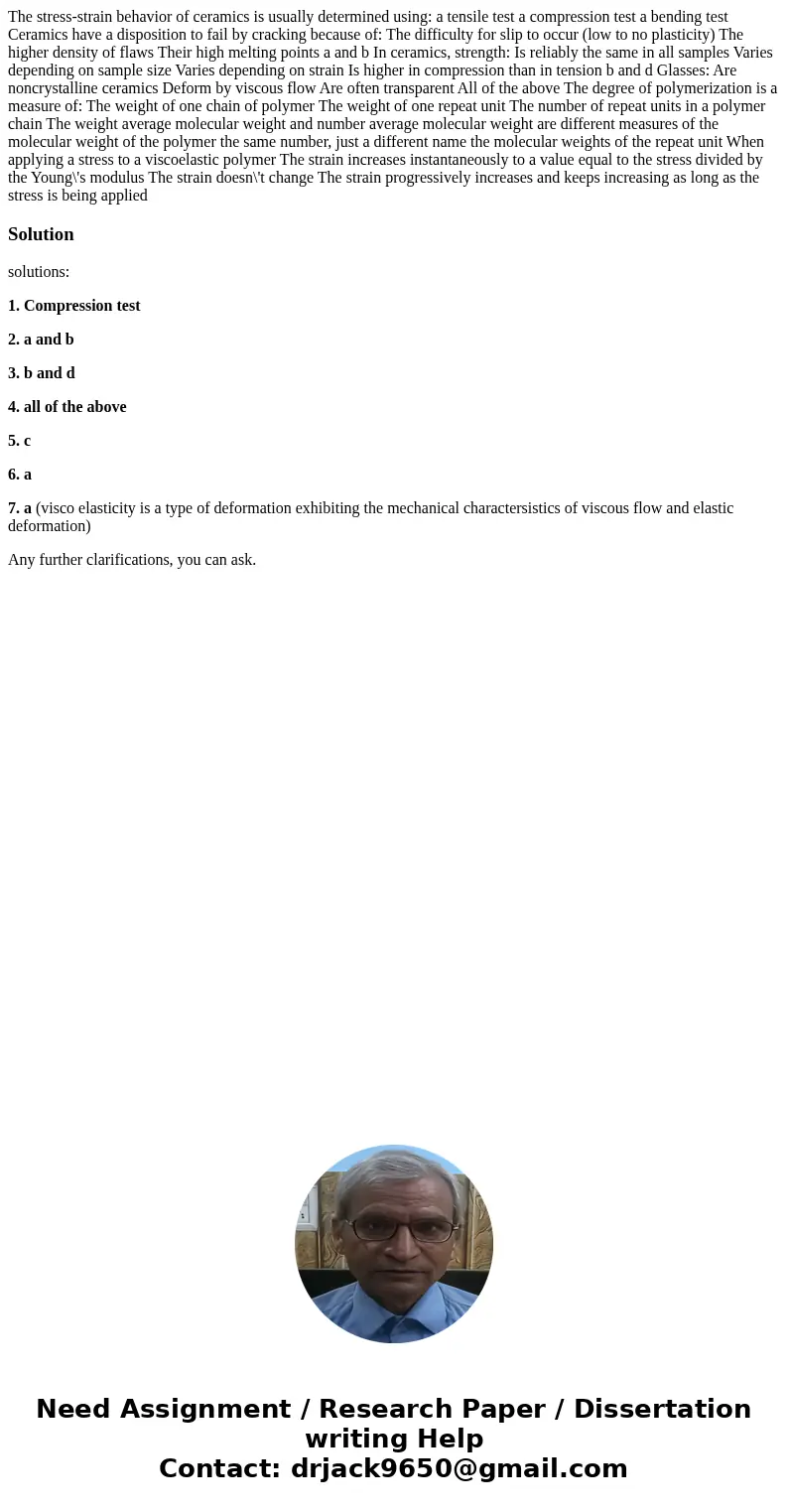The stressstrain behavior of ceramics is usually determined
The stress-strain behavior of ceramics is usually determined using: a tensile test a compression test a bending test Ceramics have a disposition to fail by cracking because of: The difficulty for slip to occur (low to no plasticity) The higher density of flaws Their high melting points a and b In ceramics, strength: Is reliably the same in all samples Varies depending on sample size Varies depending on strain Is higher in compression than in tension b and d Glasses: Are noncrystalline ceramics Deform by viscous flow Are often transparent All of the above The degree of polymerization is a measure of: The weight of one chain of polymer The weight of one repeat unit The number of repeat units in a polymer chain The weight average molecular weight and number average molecular weight are different measures of the molecular weight of the polymer the same number, just a different name the molecular weights of the repeat unit When applying a stress to a viscoelastic polymer The strain increases instantaneously to a value equal to the stress divided by the Young\'s modulus The strain doesn\'t change The strain progressively increases and keeps increasing as long as the stress is being applied
Solution
solutions:
1. Compression test
2. a and b
3. b and d
4. all of the above
5. c
6. a
7. a (visco elasticity is a type of deformation exhibiting the mechanical charactersistics of viscous flow and elastic deformation)
Any further clarifications, you can ask.

 Homework Sourse
Homework Sourse